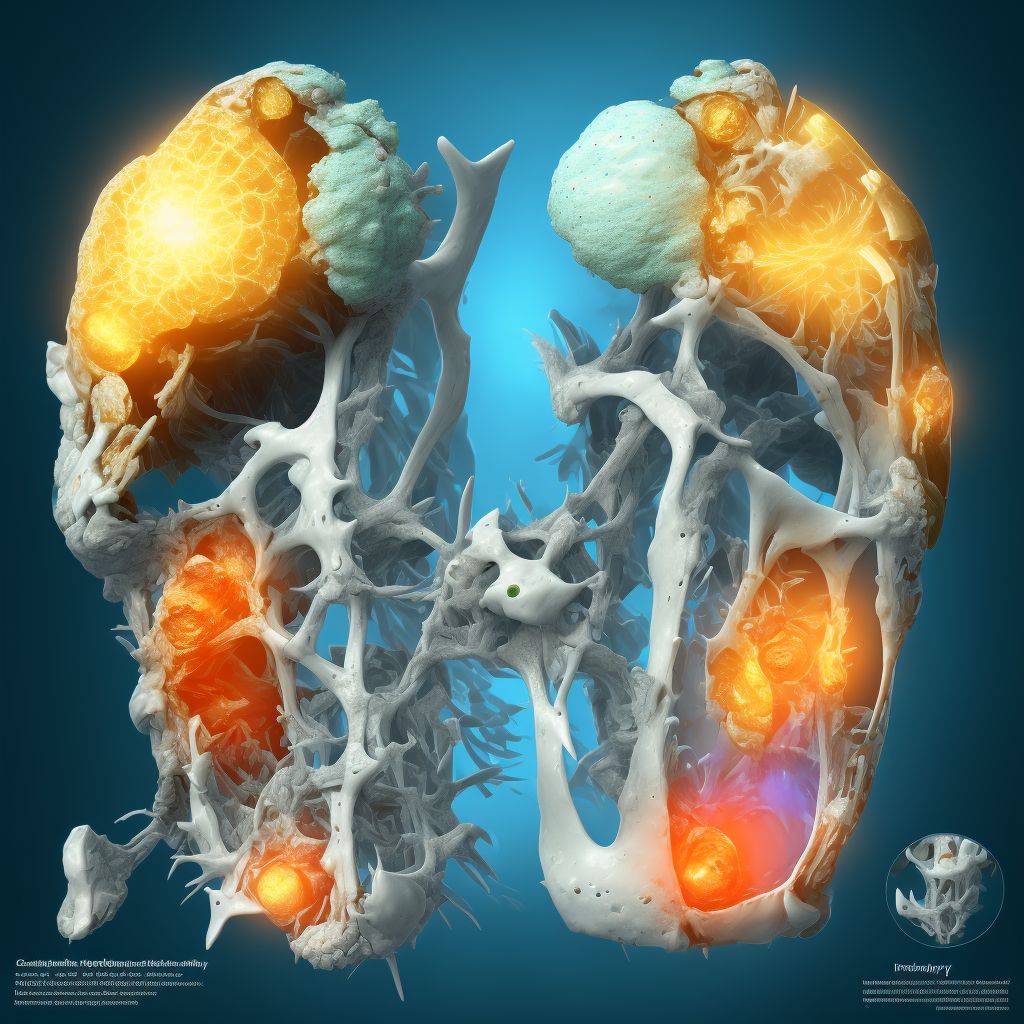
Nondisplaced fracture of right tibial tuberosity, subsequent encounter for open fracture type I or II with routine healing Save
ICD-10 code: S82.154E
Disease category: S82.154: Nondisplaced fracture of right tibial tuberosity
Nondisplaced Fracture of Right Tibial Tuberosity: Understanding Open Fracture Type I or II with Routine Healing
A nondisplaced fracture of the right tibial tuberosity is a specific type of injury that occurs when the bony prominence located on the upper front part of the shinbone experiences a break without any significant displacement. In some cases, this fracture may require subsequent medical attention due to an open fracture type I or II, which involves the bone breaking through the skin but with routine healing. Let's delve into the details of this condition.
An open fracture type I or II is characterized by the bone's exposure through the skin, indicating an external wound. However, the severity is relatively low, and routine healing is typically expected. It is crucial to note that open fractures of this nature should be promptly assessed and treated by a medical professional to prevent complications such as infection.
During the subsequent encounter for this injury, healthcare providers will focus on monitoring the healing progress and ensuring that no complications arise. Routine check-ups and X-rays may be performed to assess bone alignment and the healing process. Additionally, patients may receive guidance regarding proper care for the wound, such as cleaning and dressing, to minimize the risk of infection.
Patients with a nondisplaced fracture of the right tibial tuberosity and an open fracture type I or II should adhere to the recommended treatment plan and follow their healthcare provider's instructions. Taking proper care of the injury and adhering to any prescribed medications or physical therapy will aid in a smooth recovery process.
- Rest and Immobilization: Adequate rest is essential to allow the bone to heal properly. Immobilization methods, such as the use of a cast, brace, or splint, may be prescribed to stabilize the fracture site and prevent further injury.
- Pain Management: Over-the-counter pain relievers or prescribed medications can help alleviate any discomfort experienced as a result of the fracture. However, it is important to consult with a healthcare professional before taking any medication.
- Physical Therapy: In some cases, rehabilitation exercises may be recommended to restore strength, flexibility, and range of motion in the affected leg once the fracture has sufficiently healed. Physical therapy can aid in the recovery process and promote optimal functionality.
In conclusion, a nondisplaced fracture of the right tibial tuberosity with subsequent open fracture type I or II and routine healing requires careful monitoring and proper care to ensure a successful recovery. By following the recommended treatment plan and working closely with healthcare professionals, patients can increase their chances of returning to normal activities without complications.
Treatment of Nondisplaced fracture of right tibial tuberosity, subsequent encounter for open fracture type I or II with routine healing:
Treatment options for Nondisplaced Fracture of Right Tibial Tuberosity, Subsequent Encounter for Open Fracture Type I or II with Routine Healing
Dealing with a nondisplaced fracture of the right tibial tuberosity can be a challenging experience. However, with the right treatment options, you can recover and regain your mobility. In this article, we will explore some effective treat...
To see full information about treatment please Sign up or Log in